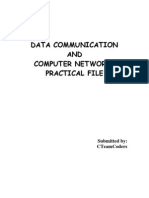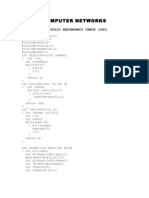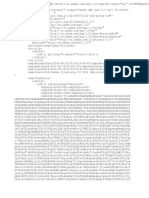0% found this document useful (0 votes)
565 views19 pagesData Communications and Networking Lab File
The document contains a lab file for experiments conducted on data communication and networking. It includes 8 experiments with aims, code snippets, and outputs for each experiment. The experiments cover topics like bit stuffing and destuffing, determining IP address classes, translating IP addresses between dotted decimal and binary formats, and implementing wiring configurations and algorithms like Dijkstra's shortest path algorithm.
Uploaded by
Anshul GeraCopyright
© Attribution Non-Commercial (BY-NC)
We take content rights seriously. If you suspect this is your content, claim it here.
Available Formats
Download as DOC, PDF, TXT or read online on Scribd
0% found this document useful (0 votes)
565 views19 pagesData Communications and Networking Lab File
The document contains a lab file for experiments conducted on data communication and networking. It includes 8 experiments with aims, code snippets, and outputs for each experiment. The experiments cover topics like bit stuffing and destuffing, determining IP address classes, translating IP addresses between dotted decimal and binary formats, and implementing wiring configurations and algorithms like Dijkstra's shortest path algorithm.
Uploaded by
Anshul GeraCopyright
© Attribution Non-Commercial (BY-NC)
We take content rights seriously. If you suspect this is your content, claim it here.
Available Formats
Download as DOC, PDF, TXT or read online on Scribd
/ 19
























































































